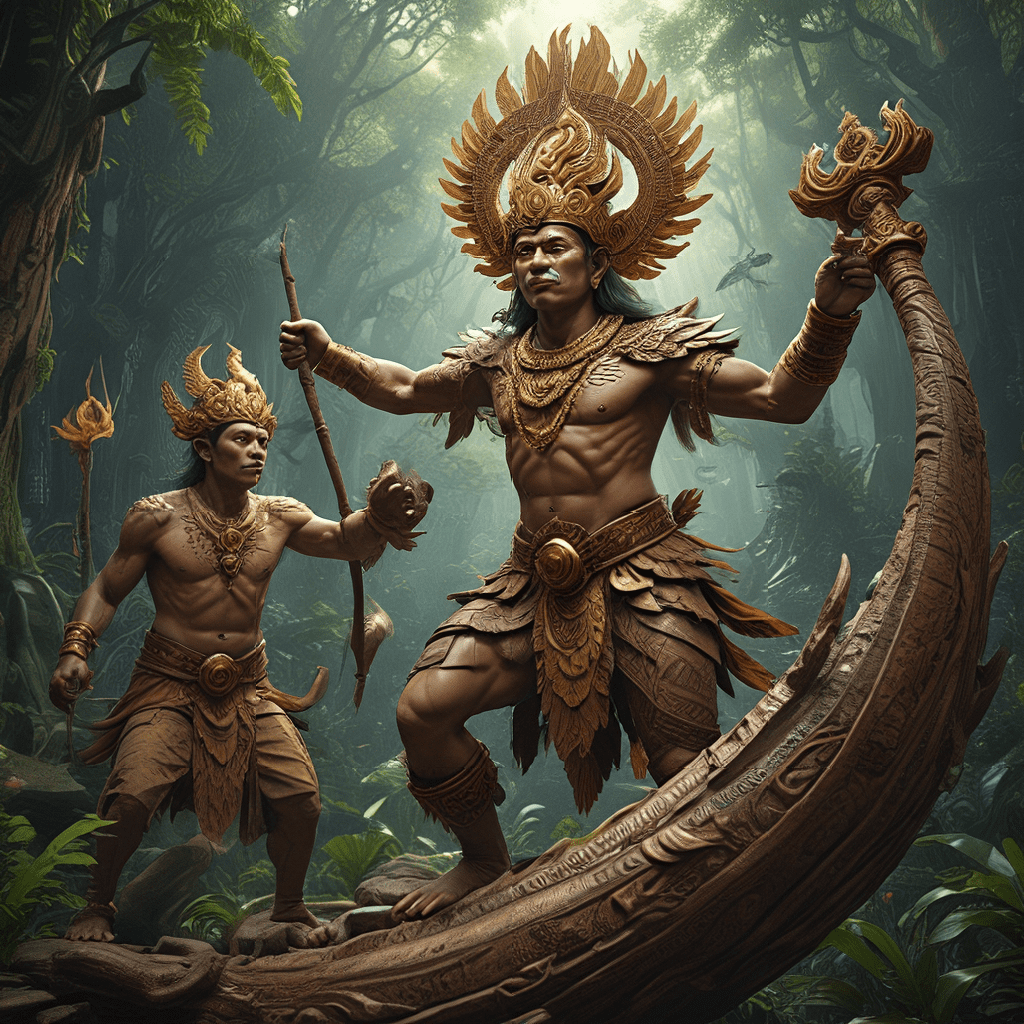Lies, Laughs, and Legends: The Allure of Trickster Stories
I. Introduction to Trickster Stories
Trickster stories are a fascinating genre of folklore that feature clever and mischievous characters who use their wit and cunning to navigate complex situations. These tales often revolve around themes of deception, humor, and the subversion of authority. Historically, trickster tales have held significant cultural importance across various societies, serving as vehicles for moral lessons, social critique, and entertainment. This article will explore the characteristics of trickster figures, their presence in different cultures, their psychological appeal, and their relevance in contemporary storytelling.
II. The Archetype of the Trickster
The trickster archetype is defined by a set of unique characteristics that make these figures both endearing and complex. Common traits include:
- Cunning: Tricksters are often sly and resourceful, able to outsmart others.
- Humor: They employ wit and humor to navigate challenges, often bringing laughter to serious situations.
- Nonconformity: Tricksters defy societal norms and expectations, embodying a spirit of rebellion.
Examples of famous trickster characters include:
- Anansi: The spider from African folklore known for his cleverness.
- Loki: The Norse god of mischief who often creates chaos among the gods.
- Coyote: A central figure in Native American mythology known for his trickery and transformative abilities.
III. Trickster Tales in Different Cultures
Trickster tales vary widely across cultures, each bringing unique flavors to the archetype:
A. African Folklore and the Role of Anansi
Anansi, the spider, is a staple of West African folklore, often depicted as a clever and mischievous being who challenges the status quo. His tales frequently teach moral lessons, highlighting the importance of wisdom and resourcefulness.
B. Native American Stories Featuring Coyote
Coyote is a prominent figure in many Native American cultures, embodying both creation and destruction. His stories often illustrate the duality of nature, showcasing how humor and trickery can lead to profound lessons about life and morality.
C. Norse Mythology and Loki’s Influence
Loki, the Norse god, is renowned for his cunning and ability to manipulate situations to his advantage. His tales often involve themes of chaos, transformation, and the consequences of deceit, making him a complex figure in mythology.
D. Asian Trickster Figures (e.g., The Monkey King)
The Monkey King, or Sun Wukong, from Chinese mythology, is another celebrated trickster. His adventurous spirit and challenges to authority make him a beloved character, emphasizing themes of rebellion and self-discovery.
IV. The Psychology Behind the Allure of Trickster Stories
Trickster stories resonate deeply with audiences due to their unique psychological appeal:
A. The Appeal of Humor and Absurdity
Humor plays a crucial role in trickster tales, allowing audiences to engage with complex issues in a lighthearted manner. The absurdity often found in these stories encourages laughter and reflection.
B. Tricksters as Symbols of Rebellion and Subversion
Tricksters challenge authority and societal norms, making them relatable figures for those who feel marginalized or oppressed. Their rebellious nature inspires audiences to question the status quo.
C. Navigating Complex Moral Landscapes Through Trickster Narratives
Trickster narratives often present moral dilemmas that force characters and audiences to navigate gray areas of ethics, reflecting the complexities of real life.
V. The Role of Tricksters in Social Commentary
Trickster tales serve as powerful tools for social commentary:
A. How Trickster Tales Reflect Societal Norms and Challenges
These stories often mirror the struggles and injustices present in society, prompting discussions about important issues.
B. The Use of Satire and Irony in Conveying Messages
Through satire, tricksters expose the absurdities of societal norms, encouraging audiences to think critically about their beliefs and values.
C. Tricksters as Agents of Change Within Their Stories
Many trickster characters instigate change within their narratives, demonstrating the potential for individual actions to challenge larger societal issues.
VI. Trickster Stories in Contemporary Culture
In recent years, trickster themes have resurfaced in various forms of media:
A. Adaptations in Literature and Film
Modern adaptations of trickster tales can be found in literature and film, often reinterpreting classic characters for new audiences.
B. The Resurgence of Trickster Themes in Modern Storytelling
Contemporary storytelling frequently revisits trickster motifs, showcasing their relevance in today’s world.
C. Examples of Contemporary Trickster Characters (e.g., Deadpool)
Characters like Deadpool from Marvel Comics exemplify the modern trickster—witty, irreverent, and often breaking the fourth wall to engage the audience in the narrative.
VII. The Educational Value of Trickster Tales
Trickster stories offer valuable lessons in educational contexts:
A. Teaching Moral Lessons Through Humor and Wit
The humor in trickster tales makes complex moral lessons accessible and engaging for learners.
B. Encouraging Critical Thinking and Questioning Authority
By presenting characters who challenge norms, these stories inspire students to think critically and question established beliefs.
C. Utilizing Trickster Stories in Classrooms
Incorporating trickster tales into curricula can foster creativity and discussion among students, allowing them to explore diverse perspectives.
VIII. The Evolution of Trickster Narratives
As cultures change, so do their narratives:
A. How Trickster Stories Have Transformed Over Time
Trickster stories have evolved alongside societies, adapting to reflect contemporary values and challenges.
B. The Impact of Globalization on Traditional Tales
Globalization has facilitated the blending of trickster narratives from different cultures, creating new hybrids in storytelling.
C. The Blending of Cultural Narratives in Modern Storytelling
Modern media often combines various cultural elements, enriching the trickster archetype and expanding its reach.
IX. The Future of Trickster Stories
The future of trickster stories looks promising:
A. Emerging Trends in Storytelling and Media
New platforms and technologies allow for innovative storytelling techniques that can revitalize the trickster archetype.
B. The Potential for New Trickster Figures in Digital Culture
Digital culture presents opportunities for fresh trickster figures to emerge, reflecting the complexities of modern life.
C. Preservation of Traditional Tales in a Modern Context
Efforts to preserve traditional trickster tales are essential to maintaining cultural heritage while allowing for contemporary reinterpretation.
X. Conclusion: The Enduring Legacy of Trickster Stories
In summary, trickster stories are a rich and dynamic genre that spans cultures and centuries. They serve as mirrors reflecting societal norms, vehicles for moral education, and sources of entertainment. The importance of continuing the tradition of trickster storytelling cannot be overstated, as these narratives not only entertain but also instigate thought, challenge authority, and encourage creativity. As we navigate an ever-evolving world, the legacy of the trickster will undoubtedly continue to captivate and inspire future generations.




